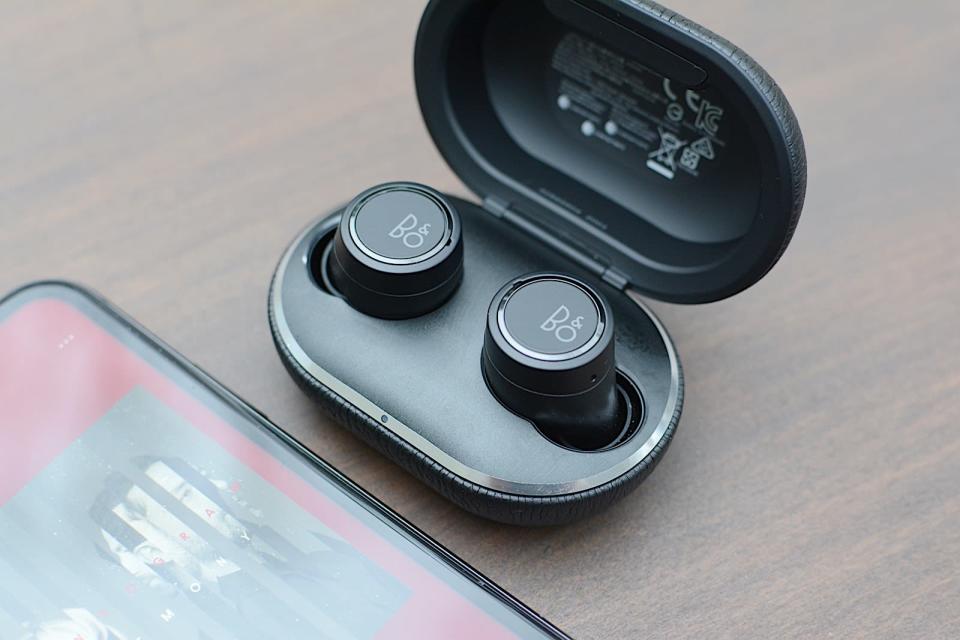Bang & Olufsen Beoplay E8 true wireless earbuds review
$350 is too much for premium buds that are missing some major features.
If it ain't broke, make small tweaks to improve it anyway.
That's not quite how the old saying goes, but that's the approach Bang & Olufsen took with its third-generation E8 true wireless earbuds ($350). The best aspects of last year's E8 2.0 are back alongside small improvements to size and battery life. Despite great sound and handy features, there's one glaring omission. And at this price, I expect all bases covered.
The first difference you'll notice between the second- and third-generation E8 is size. This latest version is noticeably smaller. While it's still circular, you'll also see that the hump on top is gone. B&O was able to improve the fit, thanks to the modest size reduction. The company says it used 3D modeling to accommodate a wider range of ear shapes and sizes. The third-generation model is also slightly lighter, but I had a hard time telling much difference. Even with the changes, these are still bigger than the likes of the Jabra Elite 75t ($180) and Samsung Galaxy Buds+ ($150). For me, those smaller buds are more comfortable for hours of continuous use. And if comfort is paramount, you might want to consider one of those cheaper alternatives.
The iconic B&O logo is still visible on the outside of each earbud. Despite being mostly plastic, the metal accent around the touchpad is still there, which gives these a more refined look than most true wireless buds. Speaking of the touchpad, it now has a glossy finish instead of matte like the rest of the buds. That could be a bad thing depending on your preferences, but in my opinion, it's just a notable change, not one that drastically alters the look of the E8. There are also LED pairing indicators on the underside of each bud, so you immediately know when these are ready to connect and when they're synced with your phone.
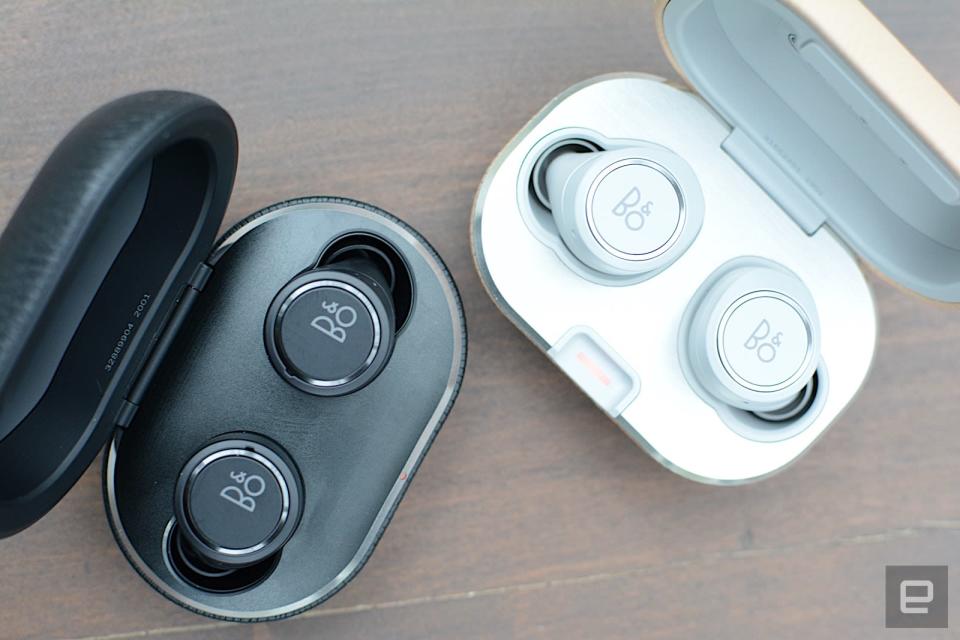
The charging case is also a smidge smaller, but not by much. The rounded rectangle is now more of a pill shape, with softer corners. While it's still wrapped in leather with an aluminum ring around the middle, the metal on the inside is almost entirely gone. The area where you dock the buds used to be brushed aluminum with plastic inserts; now the whole interior is plastic with some subtle metal accents. Bang & Olufsen also made the charging-indicator light on the outside smaller. I prefer the more discreet LED, but it shouldn't impact your buying decisions. The charging case still connects to an outlet via USB-C and supports Qi wireless charging. If you're in the market for a charging pad, B&O made one to match your earbuds for $125.
Touch controls haven't changed though. On the right side, press once to play/pause and double press to skip forward. On the left, press once to activate transparency mode and twice to go back to the previous track. A triple tap on the right earbud will activate your voice assistant of choice. For volume controls, you press and hold on the right to increase it or press and hold on the left to turn it down. B&O had all the bases covered on the E8 2.0, so there was no need to change things here. These controls work pretty reliably, though I had some issues with the triple tap. But that's not an issue unique to these earbuds, as I've had trouble with the more involved gestures on plenty of other units. You can't customize the onboard controls on the E8 like you can on some earbuds. But since B&O included access to transparency mode, volume controls and the ability to summon a voice assistant, there's much need for that.
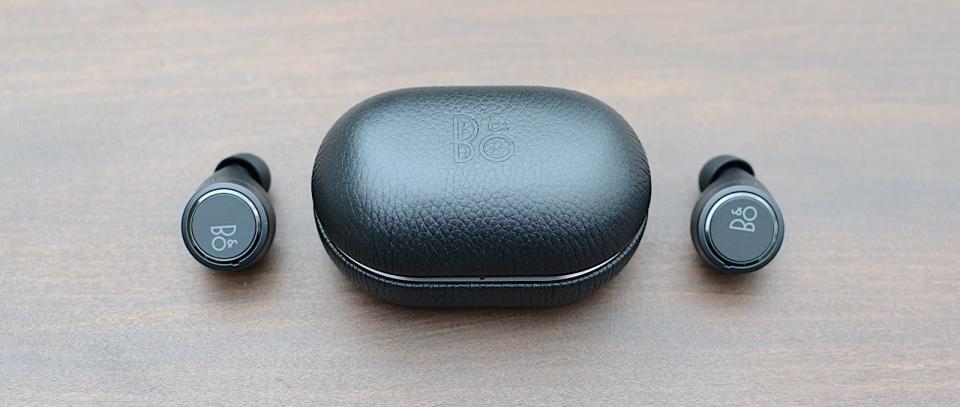
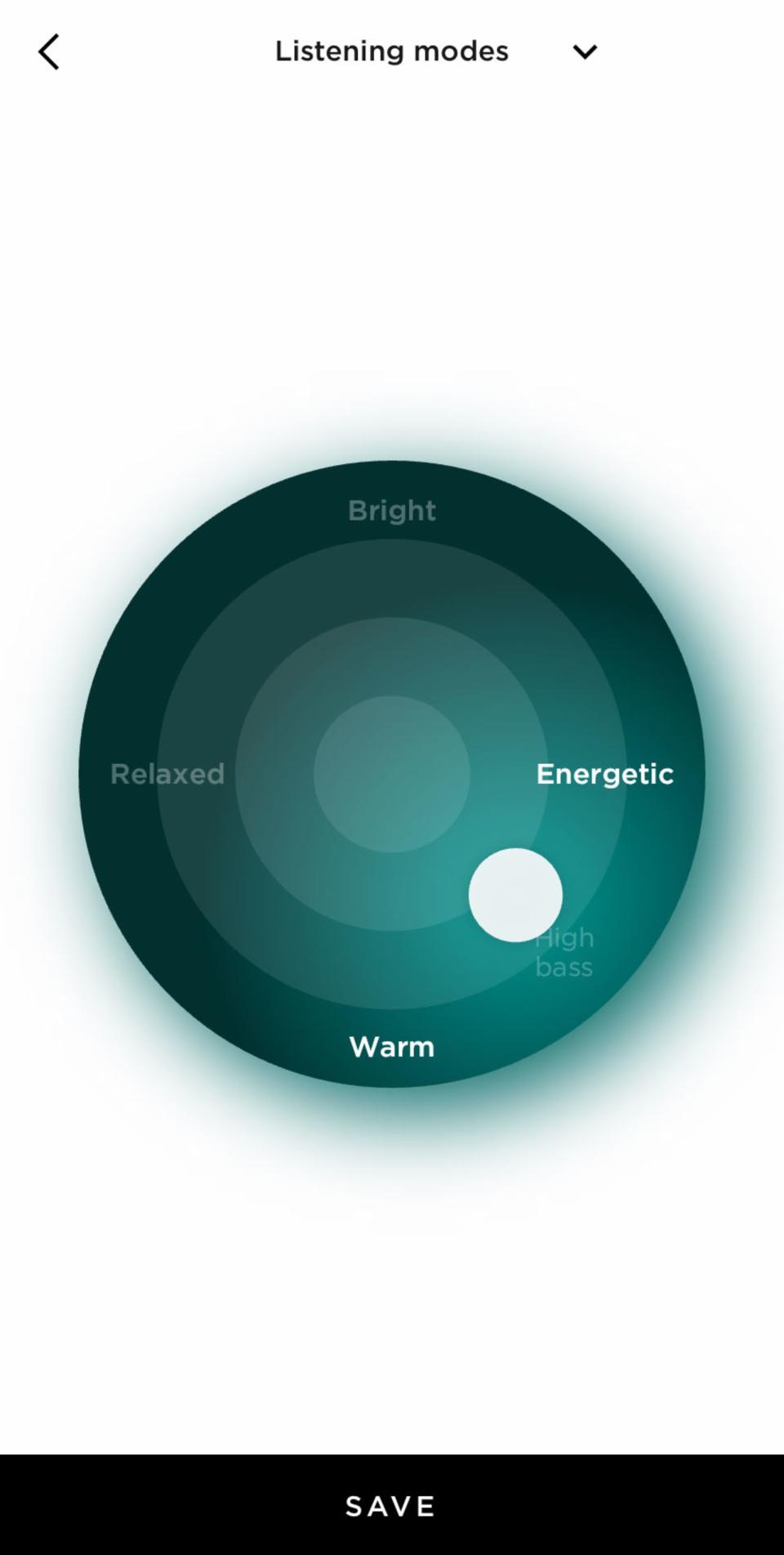
You can customize the sound through the B&O companion app though. You can choose one of five audio presets: Optimal (default), Commute, Clear, Workout and Podcast. To me the Optimal preset sounded best. The difference between most presets is subtle, but you can definitely tell a difference. The biggest change is between Optimal and Podcast, which is to be expected.
There's also an EQ circle that you can slide around to customize things beyond the presets. It's a more approachable graphic than the traditional EQ curve more experienced users might prefer. Words like "bright," "relaxed," "energetic" and "warm" are used to describe the areas of the circle. However, once you start moving around, the app will tell you where bass and treble levels reside. That Optimal preset is dead center, but if you select one of the other presets, you'll see where the tuning started as you move around the circle. B&O doesn't go as deep into EQ customization as the apps from Sony, Sennheiser and a few others, but at least it's here.
Inside the app you can also crank up the ambient sound mode or enable automatic standby. That latter feature will automatically put the earbuds in standby mode when there's no active audio source for 15 minutes. It's not a groundbreaking feature, but it's still nice to have when you want to get as much out of your battery as possible.
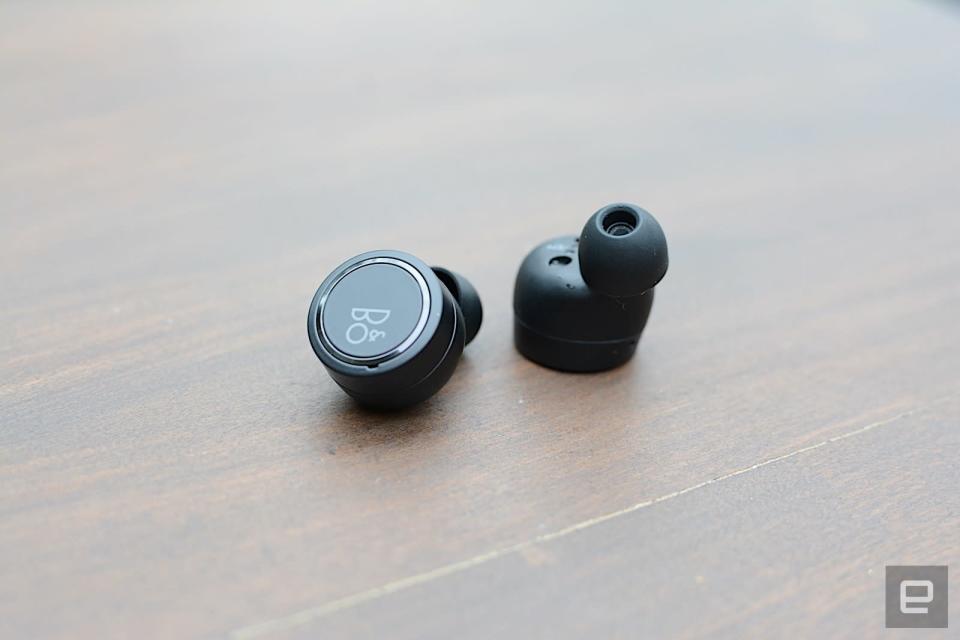
What you won't find on the E8 3.0 is active noise cancellation (ANC). No, it's still not a universal feature, even on the pricey premium true wireless options -- but for $350, you expect these earbuds to be fully loaded. B&O does offer a handy ambient sound mode, but it doesn't actually counter any unwanted noise. You're left with passive noise isolation here, which could be a dealbreaker for some, especially at this price. The E8 also doesn't automatically pause when you remove the buds from your ears. While I understand the desire to not impact sound quality with ANC, automatic pausing is a basic and near-universal feature that should absolutely be on a set of $350 earbuds.
One thing I've always liked about B&O headphones is their crystal-clear audio. You can hear subtle details that don't come through on some of the competition's. That's true of the company's on- and over-ear headphones, and it's true of the third-generation E8. There's snap and rattle to the snare as well as depth to the kick, all of which create a more open audio profile where some earbuds can fall flat. This is especially true on hip-hop tracks with a full band or more-elaborate instrumentation -- acts like Anderson .Paak or Kaytranada.
The tuning on the latest version is far from perfect. I've always preferred more bass than B&O typically delivers on its headphones, and that's true here. However, with the app, it's easy to boost the low-end with a couple of swipes. I didn't make a huge change, but with a small adjustment from the default Optimal setting, I was good to go. The E8 held up well across a range of genres -- from hip-hop to bluegrass and metal to synth-heavy electronic tunes.
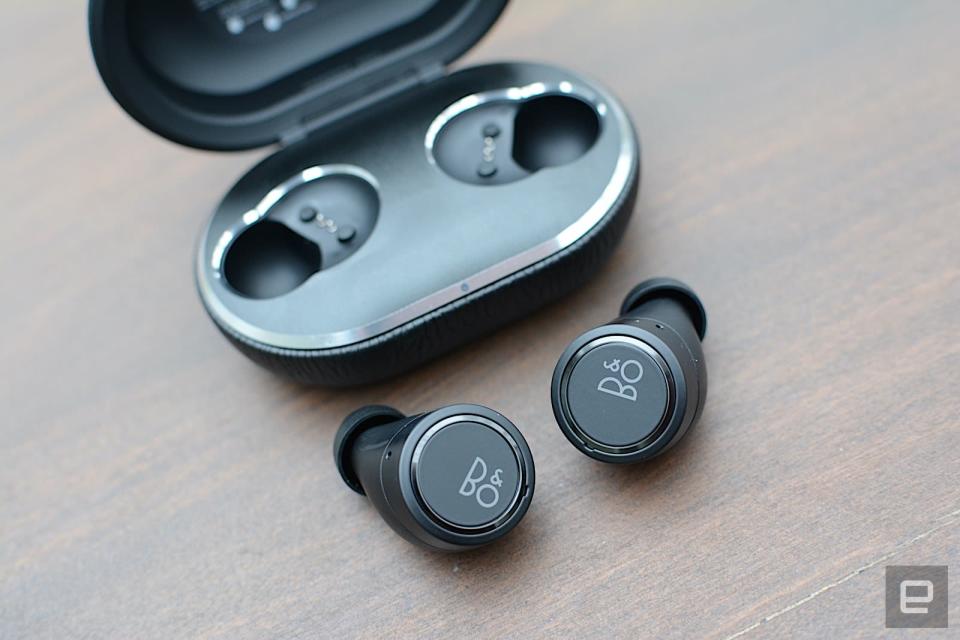
B&O also added two additional microphones, bringing the total to four. During call tests with both the second- and third-generation E8, the person on the other end said I sounded better with this new model. Of course, even the best true wireless earbuds will still make you sound like you're on speakerphone to a degree, but you do want them to reduce background noise as much as possible. Some do that better than others, and with the third-generation E8, my colleague said the audio quality was significantly clearer and louder than that of the previous model.
Bang & Olufsen says you can expect seven hours of battery life on the earbuds themselves, with four additional charges in the included case. That's up from four hours on the E8 2.0, so it's nearly double. Thirty-five hours of total listening time is pretty incredible for a true wireless product, even if what the buds can hold is slightly less than some others. The competition is inching toward 10 hours on a charge, with some already exceeding that mark -- like Audio-Technica's ATH-CKS5TW. I was able to manage seven hours consistently even at high volumes, which B&O says could impact its stated figures. Plus, if you're only using these two to three hours per day and docking them in the case, you can probably manage a couple weeks of use before you'll need to charge the entire set.

When it comes to "premium" true wireless earbuds, B&O's main competition is the likes of Sennheiser and Master & Dynamic. Sennheiser's Momentum True Wireless started at $300, but now that they're over a year old, you can find them on sale for around $200. They sound great, but the touch controls make them frustrating to use. Master & Dynamic is now on the second round of its true wireless earbuds. With the MW07 Plus, the company addressed a lot of the concerns we had with the original model, especially when it comes to battery life. Still, the MW07 Plus is $299, and even with ANC on board, there are better options available for less. Sony's feature-packed WF-1000XM3 is still tops for me, and you can get it for less than $200 consistently these days.
For its third-generation E8, Bang & Olufsen didn't have much that needed changing. The company made the earbuds smaller and increased battery life while keeping reliable touch controls and wireless charging intact. Plus, the E8 still looks better than a lot of the competition, especially when you factor in the fancy leather charging case. However, the lack of active noise cancellation and automatic pausing makes this a tough sell at $350. You're always going to pay a premium for B&O gear, but the company could've done more to justify the price by including a few expected features. Instead, we're left repeating the refrain: These are good true wireless earbuds, but when there are compelling options for well under $300, these are out of reach for most people.
